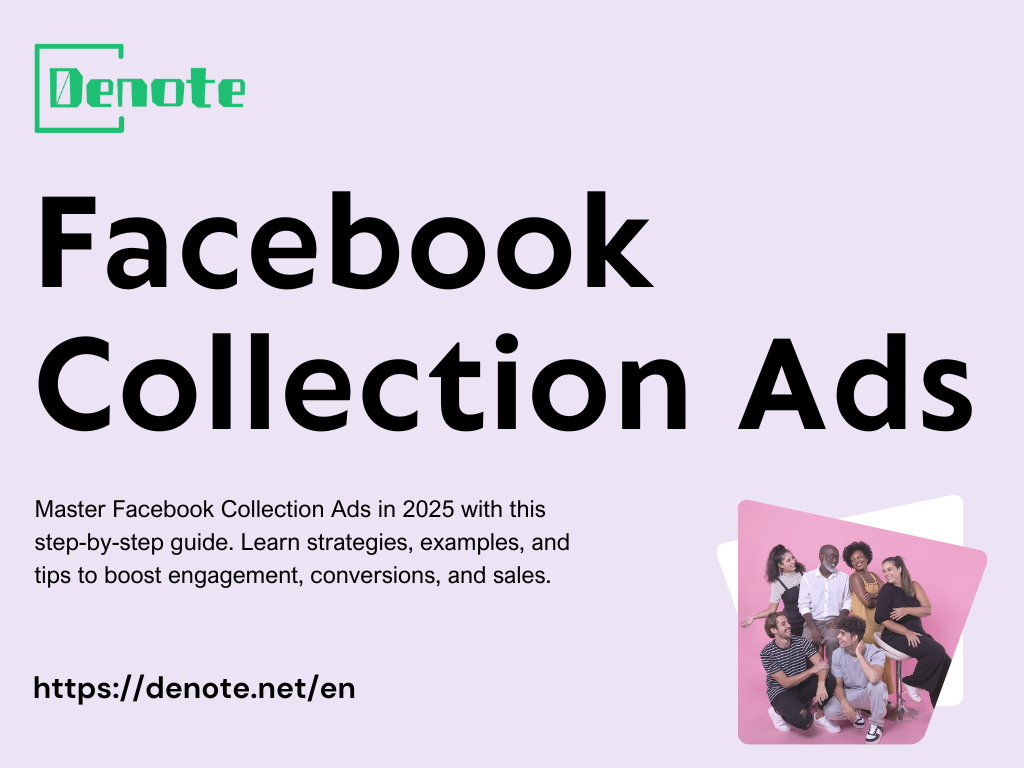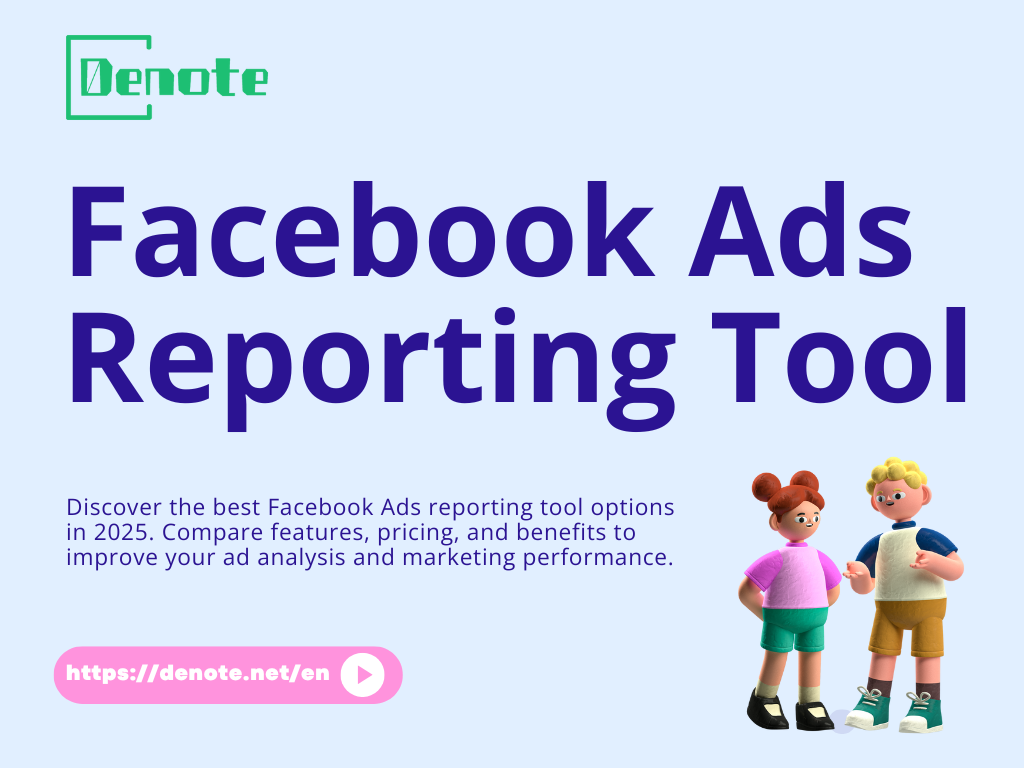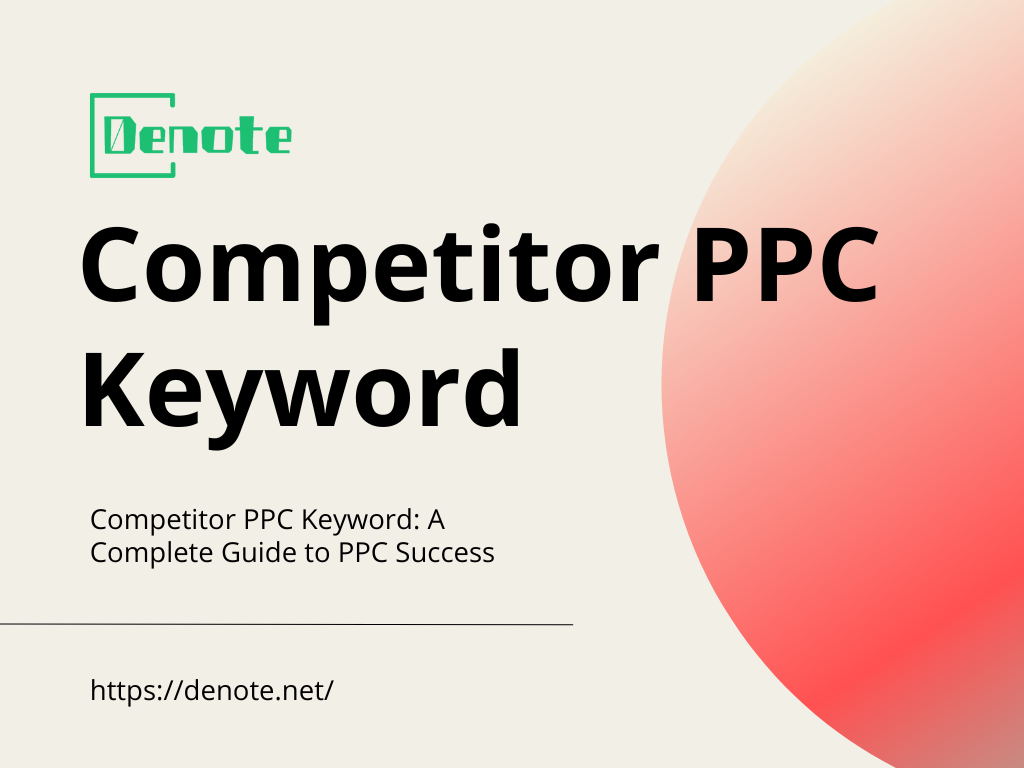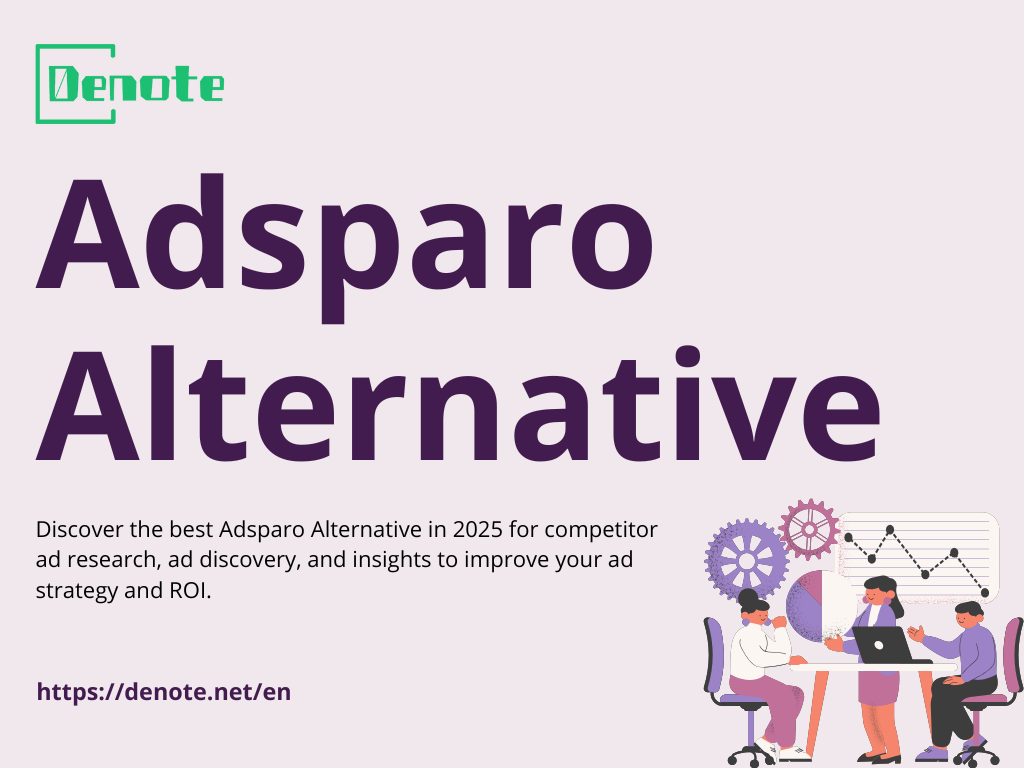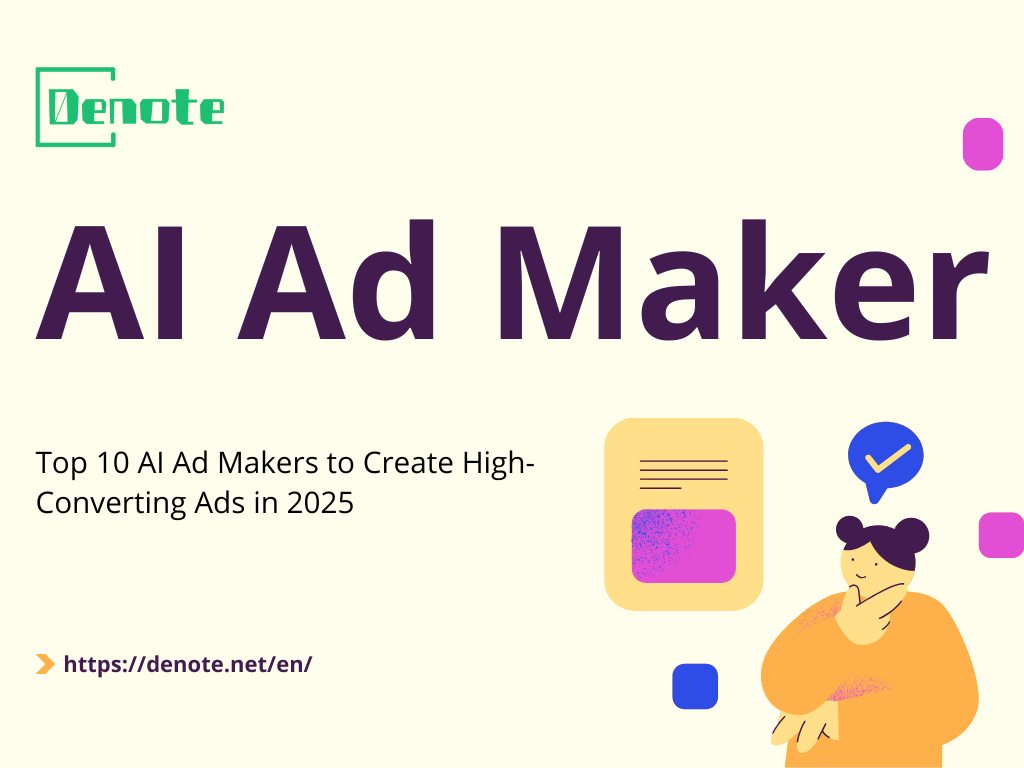What is the low cost per purchase Meta ads?
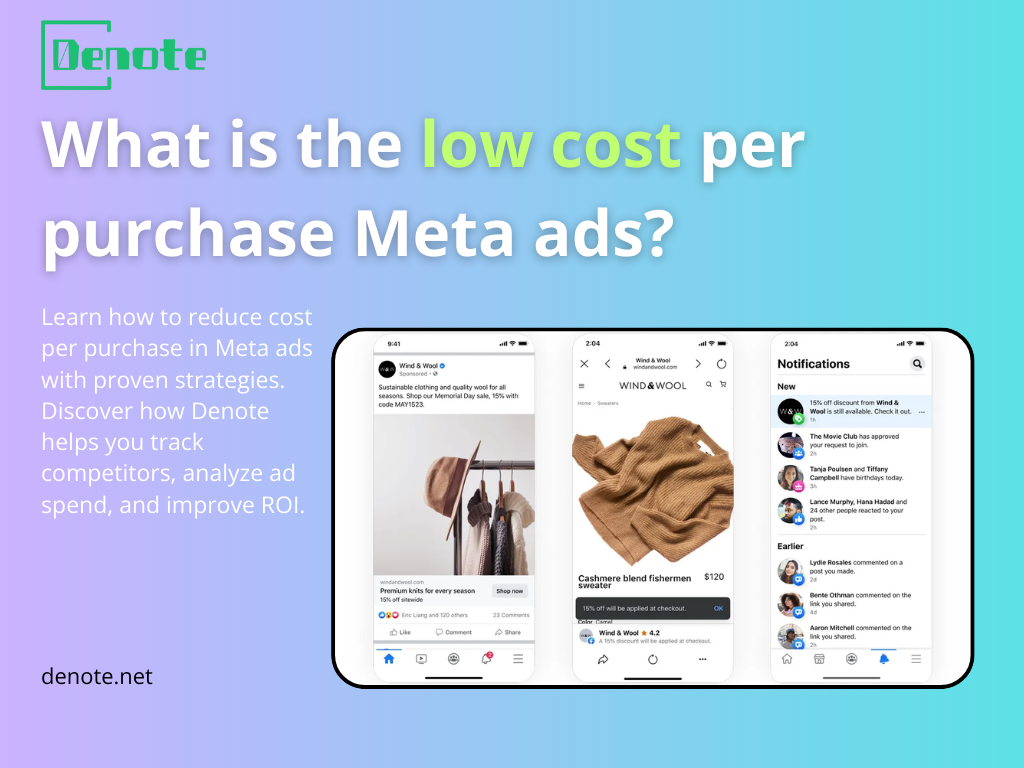
Introduction
In the fast-moving world of Meta advertising, few metrics are as closely watched as cost per purchase (CPP). This number represents how much you spend to secure one successful sale from your ad campaigns. For many advertisers, CPP directly connects to profitability. If you are paying too much to get a single purchase, the return on ad spend (ROAS) can quickly shrink, no matter how strong your product or service may be.
Lowering CPP is not just a matter of saving money—it is about creating more sustainable growth. Businesses that can consistently keep their cost per purchase under control gain the flexibility to scale campaigns and expand into new markets. On the other hand, advertisers who cannot lower CPP often find themselves stuck, unable to grow without overspending.
Today, more brands are looking beyond intuition and embracing data-driven decision making. Tools like Denote allow marketers to analyze ad spend patterns and competitor strategies in the Meta Ads Library, turning raw numbers into clear insights. This type of visibility makes it easier to understand what “low cost per purchase” really means for your industry and your campaigns.

What is Low Cost per Purchase in Meta Ads
Definition and Formula of CPP
Cost per purchase is calculated by dividing your total ad spend by the number of purchases generated. For example, if you spend $500 on ads and receive 25 sales, your CPP is $20. This straightforward formula is at the core of performance marketing.
What Counts as Low CPP
A “low” CPP depends heavily on your industry, average order value, and profit margins. For a high-ticket item, a $50 CPP might be excellent. For a low-priced consumer product, even $10 could be too high. What matters most is the ratio between CPP and the revenue per purchase.
Using Denote to Compare Ad Spend and Competitors
One of the challenges for advertisers is benchmarking. How do you know if your CPP is really competitive? This is where Denote becomes valuable. By aggregating and displaying data from the Facebook Ad Library, Denote gives you an overview of how other brands in your space are spending. You can see trends in formats, placements, and likely costs, which helps put your CPP into perspective.
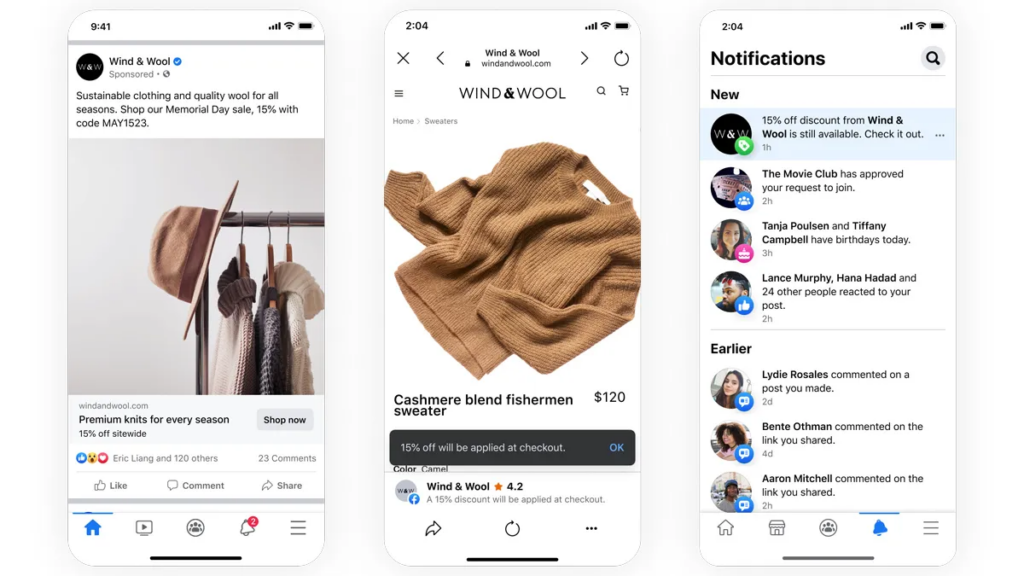
Key Factors That Affect CPP
Audience Targeting
Precise targeting is one of the strongest levers for lowering CPP. Reaching people who are truly interested in your product reduces wasted impressions and clicks. If your audience is too broad, your ads may attract clicks without purchases, driving up costs.
Ad Creatives and Formats
The way you present your message matters just as much as who sees it. High-performing creatives—whether carousel ads, vertical videos, or Reels—can significantly reduce CPP by increasing click-through rates and conversions. Testing multiple formats helps identify what resonates best with your audience.
Placement and Bidding Choices
CPP can also shift depending on where your ads appear and how you bid. Some placements, like Instagram Stories or Facebook Reels, may deliver cheaper conversions than others. Similarly, choosing between automated bidding and manual bidding can affect efficiency. Having visibility into how competitors allocate their spend, which is possible with Denote, allows you to adapt your strategy more intelligently.
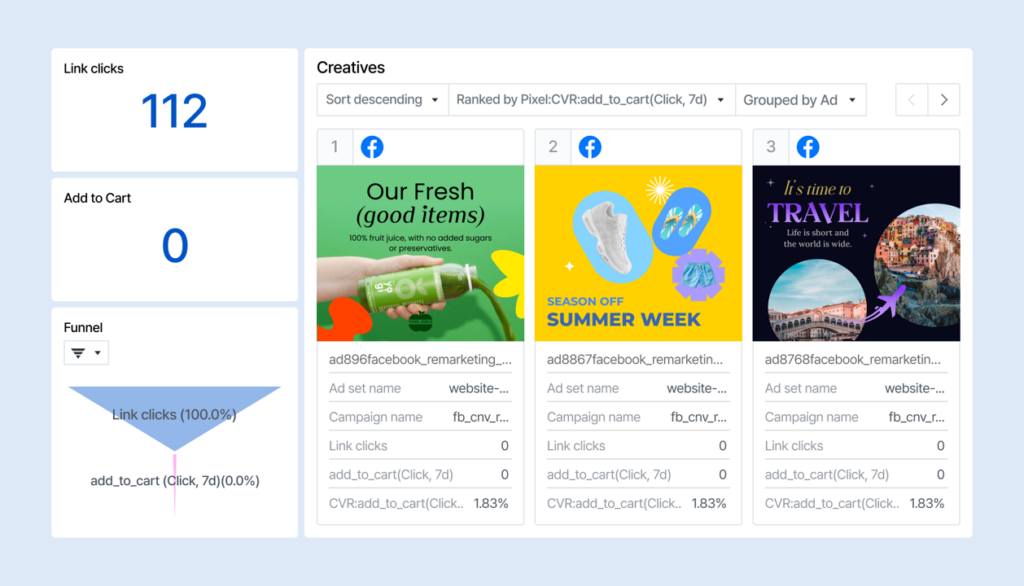
Strategies to Lower CPP
Test and Refine Targeting
Continual testing of audience segments is key. Start with broader groups, then refine by interest, behavior, and demographics. Use lookalike audiences to expand reach without losing relevance. This process ensures your ads are shown to users with higher purchase intent.
Use Effective Ad Formats
Certain formats consistently outperform others for purchases. Short vertical videos, interactive ads, and dynamic product ads often deliver stronger results than static images. If you notice competitors leaning toward specific formats in Denote’s dataset, it is a signal worth testing for your own campaigns.
Improve Landing Page Conversions
No matter how compelling your ad is, if your landing page is slow, confusing, or poorly designed, purchases will be lost. Enhancing site speed, optimizing mobile design, and simplifying the checkout process can all push your CPP down. Data tools help by showing which campaigns convert better, enabling you to replicate success. Denote offers market-wide ad spend comparisons that, when paired with your own analytics, can pinpoint the weak spots in your funnel.
Why Denote Matters
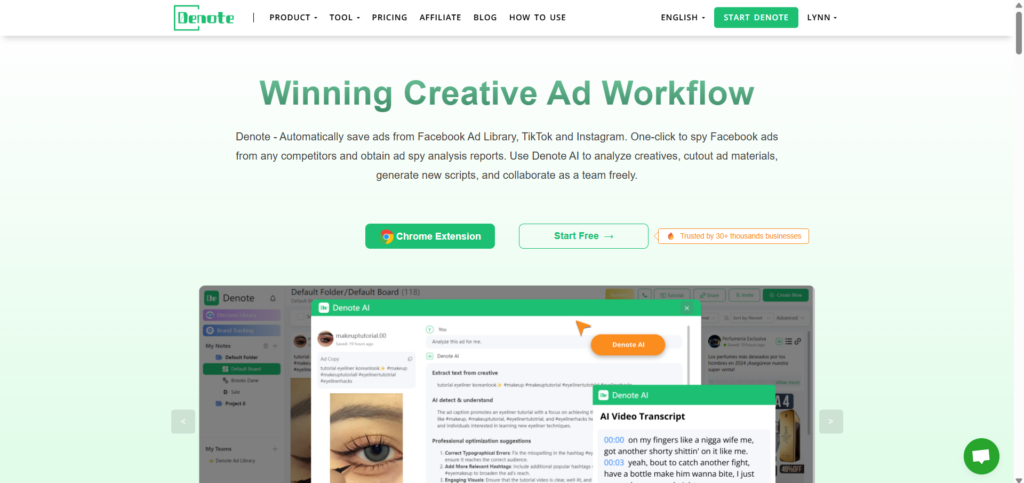
Track Ad Spend Trends
Advertising is rarely static. Costs fluctuate depending on seasonality, competition, and user behavior. Denote makes it possible to follow these shifts, giving you a broader sense of whether your rising CPP is due to internal issues or external market forces.
See Competitor Strategies
One of the most valuable features of Denote is its ability to show which ad creatives, formats, and campaigns your competitors are running. Instead of guessing why your CPP is high, you can see how other players in your space are investing. This insight reduces the need for blind experimentation.
Make Data-Based Decisions
Ultimately, lowering cost per purchase is about making smarter choices. With data at your fingertips, you can adjust budgets, refine creatives, and choose placements with confidence. Denote provides a competitive edge, ensuring decisions are based on evidence rather than speculation.
Conclusion
A low cost per purchase in Meta ads is one of the clearest signs of efficient advertising. It shows that your campaigns are reaching the right people with the right message at the right time. Achieving this balance requires careful work across targeting, creatives, placements, and landing pages.
While every advertiser’s “low CPP” looks different, the underlying principle is the same: maximize the value of every dollar spent. To do this effectively, you need both internal testing and external insights. This is why tools like Denote are becoming essential. They provide the context—competitor ad spend, format trends, and audience strategies—that makes optimization faster and less risky.
As Meta’s ecosystem becomes more competitive, the advertisers who succeed will be those who combine creativity with data. If you want to keep your CPP low and your campaigns profitable, start by analyzing your own funnel, then expand your view with market intelligence platforms like Denote. Together, these steps can transform your Meta ads from cost centers into growth engines.
